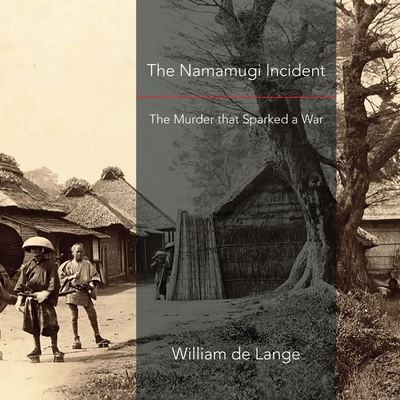The Namamugi Incident: The Murder that Sparked a War

The Namamugi Incident: The Murder that Sparked a War
On 14 September 1862, four Brits encountered the procession of the nobleman Shimazu Hisamitsu at a village called Namamugi along Japan's ancient Tōkaidō highroad. One of them, the Shanghai trader Charles Lenox Richardson, would not survive to tell the tale. Richardson's death eventually led to the Anglo-Satsuma War.
The Namamugi Incident, as it has come to be known in Japan and the West, seems to sum up perfectly the clash of cultures that attended Japan's involuntary opening up to the West. Even today, one and a half centuries after it happened, the incident holds a particular spell among the Japanese. Not a year goes by without some book, magazine, or television documentary delving into this particular episode from the closing days of Japan's feudal era. Japan's struggle to adjust to its new place in the world, its wounded sense of pride; the West's ill-conceived notions of the Orient, its imperialistic sense of superiority-all seemed to clash on that fateful sultry summer day when Charles Lenox Richardson came face to face with a Satsuma samurai named Narahara Kizaemon.
Up till now the reading of this pivotal incident in Japan's late-feudal history has been skewed either to a Western or a Japanese view of what took place, partly because of cultural and political reasons, partly because of linguistic barriers. This book is the first account in the English language to take into account all versions of what happened on that fateful day: that of the foreign settlers in Yokohama, that of the Japanese and British officials, and that of the Shimazu retainers. As a result, reading De Lange's careful reconstruction of events reads like a latter-day version of Akira Kurosawa's brilliant Rashomon: our view changes and our insight deepens with the telling of each party's story-except that, in this case, it all really happened.
PRP: 191.43 Lei
Acesta este Pretul Recomandat de Producator. Pretul de vanzare al produsului este afisat mai jos.
172.29Lei
172.29Lei
191.43 LeiLivrare in 2-4 saptamani
Descrierea produsului
On 14 September 1862, four Brits encountered the procession of the nobleman Shimazu Hisamitsu at a village called Namamugi along Japan's ancient Tōkaidō highroad. One of them, the Shanghai trader Charles Lenox Richardson, would not survive to tell the tale. Richardson's death eventually led to the Anglo-Satsuma War.
The Namamugi Incident, as it has come to be known in Japan and the West, seems to sum up perfectly the clash of cultures that attended Japan's involuntary opening up to the West. Even today, one and a half centuries after it happened, the incident holds a particular spell among the Japanese. Not a year goes by without some book, magazine, or television documentary delving into this particular episode from the closing days of Japan's feudal era. Japan's struggle to adjust to its new place in the world, its wounded sense of pride; the West's ill-conceived notions of the Orient, its imperialistic sense of superiority-all seemed to clash on that fateful sultry summer day when Charles Lenox Richardson came face to face with a Satsuma samurai named Narahara Kizaemon.
Up till now the reading of this pivotal incident in Japan's late-feudal history has been skewed either to a Western or a Japanese view of what took place, partly because of cultural and political reasons, partly because of linguistic barriers. This book is the first account in the English language to take into account all versions of what happened on that fateful day: that of the foreign settlers in Yokohama, that of the Japanese and British officials, and that of the Shimazu retainers. As a result, reading De Lange's careful reconstruction of events reads like a latter-day version of Akira Kurosawa's brilliant Rashomon: our view changes and our insight deepens with the telling of each party's story-except that, in this case, it all really happened.
Detaliile produsului









